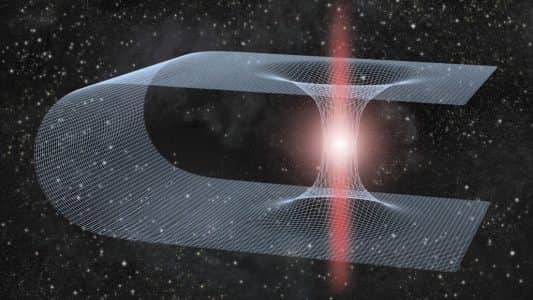Meet General Electric’s Monster Wind Turbine Fuelling The Green Energy Arms Race - Dispatch Weekly
January 6, 2021 - Reading time: 11 minutes

Although it is difficult to photograph the wind turbines whirling on the strip of land at the mouth of the port of Rotterdam, they are visible at full force. The rotors themselves have a diameter of about 2,000 meters and a wind speed of up to 60 miles per hour.
If installed in a row, the wind turbines have the potential to replace the natural gas-fired power stations that are now the backbone of many electrical systems, and the latest models will be taller than buildings on the Western European mainland. The huge whirlwind machines in the Netherlands are packed with sensors that collect data on wind speed, temperature, humidity, wind direction and other data for the giant offshore wind turbines planned by General Electric.

G.E. has not yet installed the machines in seawater, but the giant turbines are already causing a stir in the industry. The company is facing questions about whether it can expand production fast enough to build and install hundreds of wind turbines. It is a small technological leap forward, “says Jeroen van den Bosch, spokesman for leading Dutch wind farm developer EDF Energy.
But one analyst says the size, lead-up and sale of the machines are shaking up the industry, not just in the US but around the world.
The prototype is the first of its kind to be commercially deployed and one of the largest ever built. The new machine is a third more powerful and larger, with a capacity of 1,000 kilowatt hours of power and a range of up to 2,500 miles.
It will have a generation capacity that would have been almost unimaginable a decade ago but has changed. It will be able to generate enough electricity to light a city of about 12,000 households.
The turbine, which G.E. says can generate up to 1,000 megawatts (MW) of electricity per year, will be deployed off the coast of Denmark, where developers are learning to build larger and more numerous onshore turbines to capture the stronger, more reliable wind. S. Haliade – X will generate more electricity than the first offshore machine installed on the coasts of Norway and Denmark in 1991, according to the US Department of Energy’s National Renewable Energy Laboratory (NREL). The race to build larger turbines continues, and many industry indicators expect the number of offshore wind farms in Europe and the United States to surge in the coming years.![]()
Customers are likely to demand even bigger machines in the coming years, industry officials say. On the other hand, some predict that turbines, similar to commercial aircraft on the Airbus A380, will eventually reach a point where larger sizes no longer make economic sense.
“We will also reach a plateau; we just don’t know where it is yet,” said Morten Pilgaard Rasmussen, chief technology officer of the offshore wind unit of Siemens Gamesa Renewable Energy, the leading maker of offshore turbines.
Offshore technology has spread across northern Europe over the past three decades and has spread to Asia, including Taiwan, China and South Korea. Large-scale, multibillion-dollar offshore projects have attracted large investors, including the US Energy Information Administration (EIA) and private equity firms, which want to rapidly expand their green energy offerings. Investment in offshore wind energy has tripled in the past decade to $26 billion, according to the Paris-based forecasting group Renewable Energy Analytics. While offshore wind turbines now account for only 1.5 per cent of General Electric’s total business, the division is taking on its own identity and is expected to grow faster than onshore wind power in the coming years.
Still, G.E.’s bosses know that they need to be bold to lead in a more challenging maritime environment, and they see the growing market as a potential opportunity for them. G.E. began to gain a foothold in wind power in 2002, when it bought a company that had been brought down by a spectacular accounting scandal and a bankruptcy auction. When its managers decided to crack it about four years ago, it was a fringe force in the offshore industry.
The idea was to gain access to the world’s largest offshore wind farm in the Baltic Sea, Siemen. The size also helps to reduce the cost of building and maintaining wind farms, as fewer turbines are needed to produce a certain amount of electricity. Large turbines produce more electricity than smaller ones, which in turn supply more homes and businesses with electricity. Existing offshore machinery has more than doubled after the company was acquired in 2010.
Developers compete for power at a lower price for several years, and each auction differs in format. This feature has created an incentive for developers to buy enough equipment to support successful offshore power supply deals that many countries have taken up.
“What they are looking for is a turbine that allows them to win these auctions,” said Vincent Schellings, who has headed design and production of the G.E. turbine. “That is where turbine size plays a very important role.”
One of the first customers was Orsted, a Danish company that is a subsidiary of General Electric, the world’s largest manufacturer of electric vehicles. They had the opportunity to purchase 90 Haliade X-machines for a project called the “Monster Wind Turbine Project” (or “Monster Wind Turbine” in Danish) at a price of about one million dollars.
“I think they surprised everybody when they came out with that machine,” said David Hardy, chief executive of Orsted’s offshore business in North America.
As a major turbine buyer, Orsted wanted to help establish a new platform and create volume for G.E. to promote competition and innovation, Hardy said. Analysts say the S-Turbine is selling much better than its competitors expected.
On December 1, G.E. signed a contract to supply 276 turbines to the US Department of Energy’s National Renewable Energy Laboratory (NREL), which is to be the world’s largest renewable energy research and development facility. It is estimated that the deal with accompanying maintenance contracts could be as much as $13 billion. On 2 December, it signed an agreement to make the turbines available for use in a wind power plant in South Carolina for the first time in the United States.
The shafts of the G.E. machine have prompted Siemens and Gamesa to announce several competing turbines. Vestas, which until recently had the largest machine in the industry in its stable, will also soon launch a new market entry.
“We didn’t move as the first one, and that, of course, we have to address today,” said Henrik Andersen, the chief executive of Vestas.
G-E would have to start the move from scratch, which means spending $400 million to hire engineers and rebuild a factory in St. Nazaire near Cherbourg, France. Schellings says G.E. started the gambit with a $500,000 grant from the U.S. Department of Energy’s Office of Science and Technology Policy.
But the company’s ever-larger, newer models are not far off from a decades-old template. Getting bigger machines is not easy or cheap, even as companies build prototypes of new, more powerful machines.
“The fundamentals of the machine and how it works remain the same,” said Mr Rasmussen, the unit’s chief technology officer, leading to a “starting point that was a little better” than G.E.’s.
There seems to be a lot of room for competition, and the prospects for the market are getting better every year, says G.E.S. CEO and co-founder of General Electric.

DW Staff
David Lintott is the Editor-in-Chief, leading our team of talented freelance journalists. He specializes in covering culture, sport, and society. Originally from the decaying seaside town of Eastbourne, he attributes his insightful world-weariness to his roots in this unique setting.

_1.jpg)


